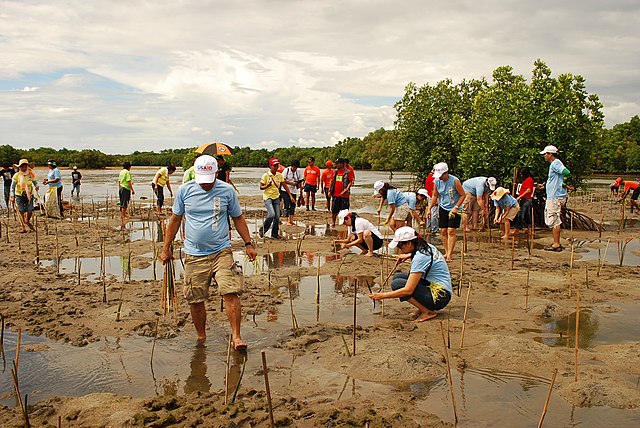First of all,
One fascinating and multifaceted part of the lively processes that administer our planet is the weather, a continually shifting phenomenon that touches our day-to-day beings. The weather has a huge effect on our experiences, A Comprehensive Overview of Weather from the soft whisper of leaves on a blustery day to the threatening roar of noise gesturing a storm. This essay will take us on a trip to understand the many aspects of weather, including its causes, patterns, and the enormous effects it has on human society and natural ecosystems.
A Comprehensive
The atmosphere of Earth:
Investigating the Earth’s atmosphere, the shield of gases that encloses our planet is central to understanding the particulars of weather. The atmosphere, which is made up of carbon dioxide, The multifaceted dance of weather decorations is initiated by sunlight’s communication with the atmosphere.
-
The Sun’s Effect on the Weather
The main foundation of energy for Earth’s weather systems is the sun, a strong spiritual body. Because of the planet’s curving and the wide-ranging angles at which sunshine enters different places, the Earth’s surface warms haphazardly. Temperature changes result from this, and the distinctive circulation that causes weather phenomena is sparked.
-
Movement inside the Atmosphere:
The Earth’s rotation and the sun’s uneven heating are the sources of atmospheric movement patterns. Warm air close to the equator rises to create low-pressure areas, whereas chillier air at higher autonomies lowers to generate high-pressure areas. Convection and the Coriolis effect, which are brought on by the Earth’s rotation, create trade winds, westerlies, and polar easterlies, which hurt┬áglobal weather patterns.
Identifying Weather Patterns:
Weather patterns are the recurring atmospheric conditions that characterize a given region for a predetermined period. These patterns are influenced by regular elements including topography, geography, and proximity to water sources. A few of the well-known meteorological patterns are:
-
Hurricanes and Cyclones:┬
Strong steamy storms with low-pressure systems and strong winds are called typhoons and hurricanes. Their formation is powered by warm ocean waters, and the Coriolis influence controls how they alternate.
-
Atmospheric disturbances and fronts:┬
Air commonalities with varying temperatures and moisture levels are separated by fronts. Frequent meteorological events, including thunderstorms, rain, and snow, are shaped when these air multitudes meet. Precipitation and atmospheric disturbances are commonly the outcome of warm and cold facades colliding.
-
La Ni├▒a y El Ni├▒o:┬
The climatological phenomena known as El Ni├▒o and La Ni├▒a are connected to the periodic promotion or decrease in sea surface temperatures in the dominant and eastern Pacific Ocean. Noteworthy worldwide effects of these incidences include changes in temperature, rainfall, and even the occurrence of life-threatening weather events.
Impact and Adaptation of Humans:
A Comprehensive
People are active participants in this multipart dance rather than only listeners as we examine the self-motivated character of weather. Weather has a wide-ranging and complex impact on human society, affecting organizations, agriculture, and all-purpose well-being.
-
Food Security and Agriculture:┬
Weather patterns have a big impact on how disparaging agriculture is. Comprehensive harvests can be wedged by dissimilarities in temperature, precipitation, and the frequency of life-threatening weather proceedings. This can result in food deficiencies and have an impact on global food security. Employing technology improvements and justifiable practices, farmers must regulate these changes.
-
Severe Weather Occurrences:┬
- Extreme weather events like droughts, droughts, floods, and wildfires have developed more mutual and stronger in recent years. To decrease their negative effects on the structure and human life, these catastrophes present serious difficulties to people around the globe and demand the development of efficient tragedy preparedness, answer, and variation plans.
-
Global Warming and Climate Change:┬
Global warming and climate change are the results of increasing greenhouse gas production from human activity, predominantly the burning of fossil fuels. Because of the increased impulsiveness of weather patterns transported about by these changes in the Earth’s climate system, communities must address the primary causes and put into place supportable strategies for mitigation and reworking.
In summary:
The weather, with its compound patterns and ever-changing moods, is a vital module of our existence. The ways that the weather expresses itself, from the mesmerizing beauty of a sunset to the steady pattern of rain, influence our judgments and feelings. Understanding the mechanics of fundamental weather patterns empowers us to distinguish the intricate steadiness that keeps life on Earth worthwhile.
People, populations, and countries must work organized to promote pliability, sustainability, and peaceful living together with the dynamic armed forces of nature as we exchange the experiments accessible by a changing climate and more changeable weather manifestations. By doing this, we can work to build a future in which people answer to weather-related events with gameness, suppleness, and a thoughtful understanding of the compound dance that normalizes the world’s atmosphere.


